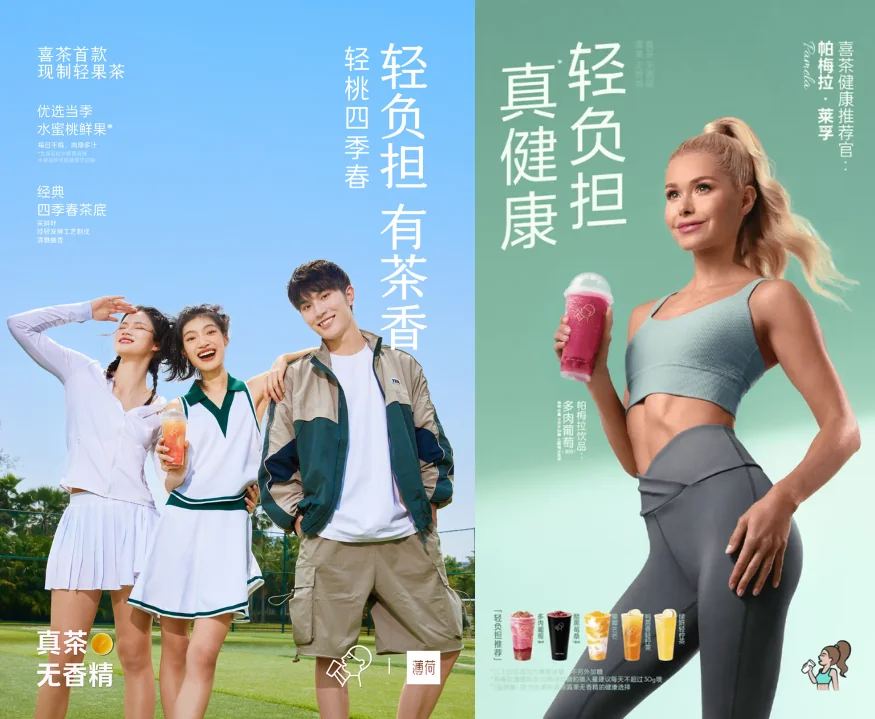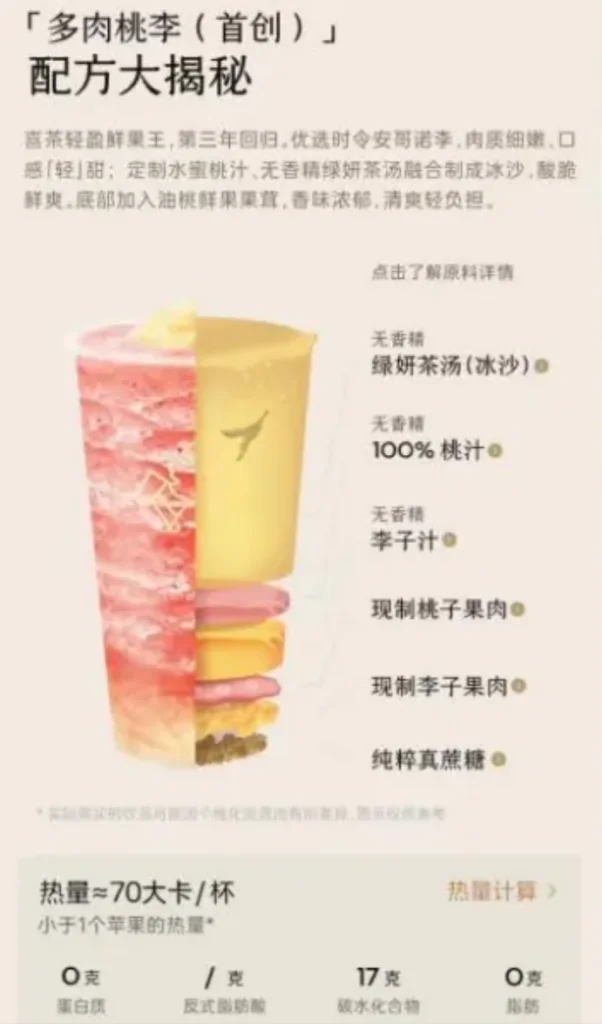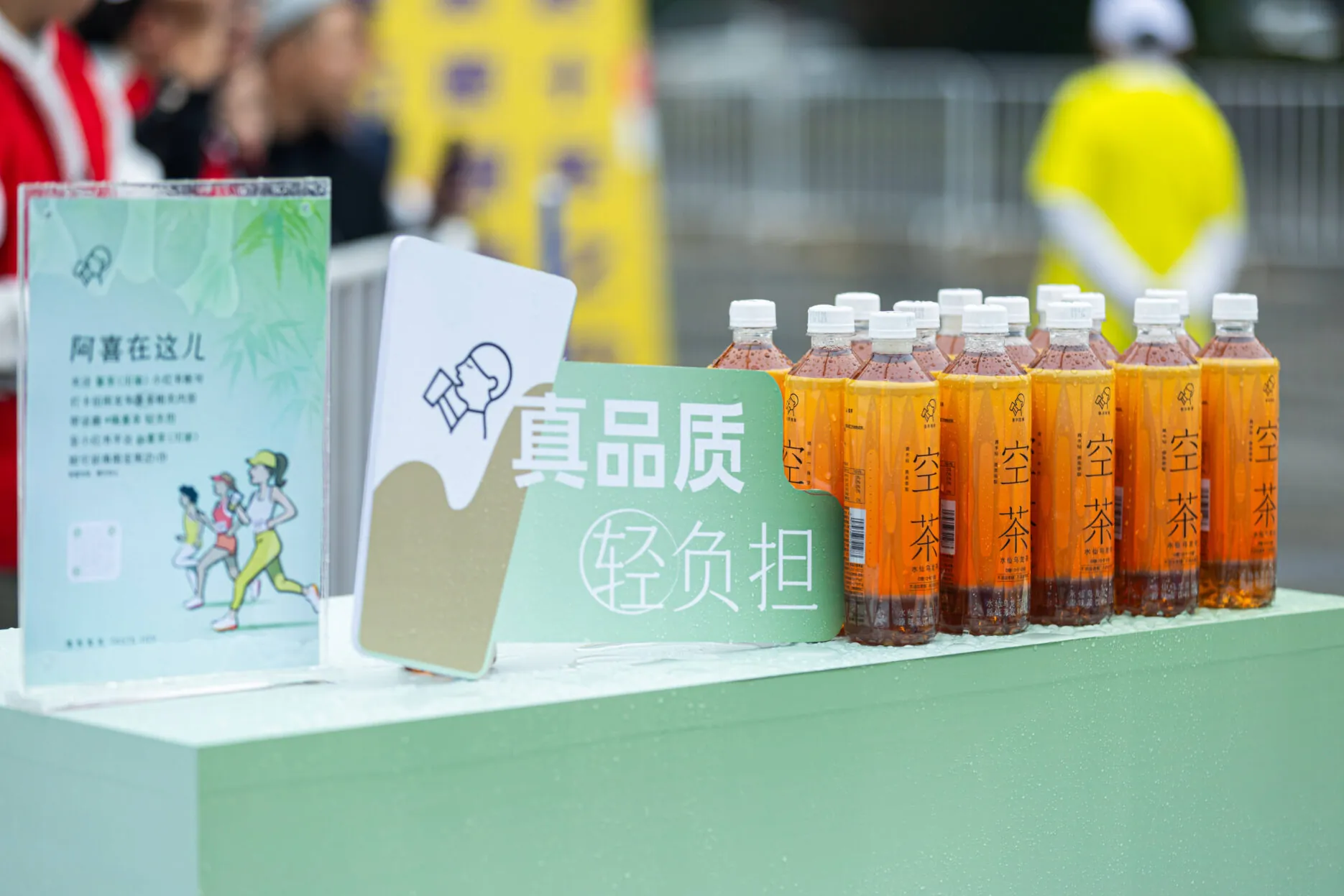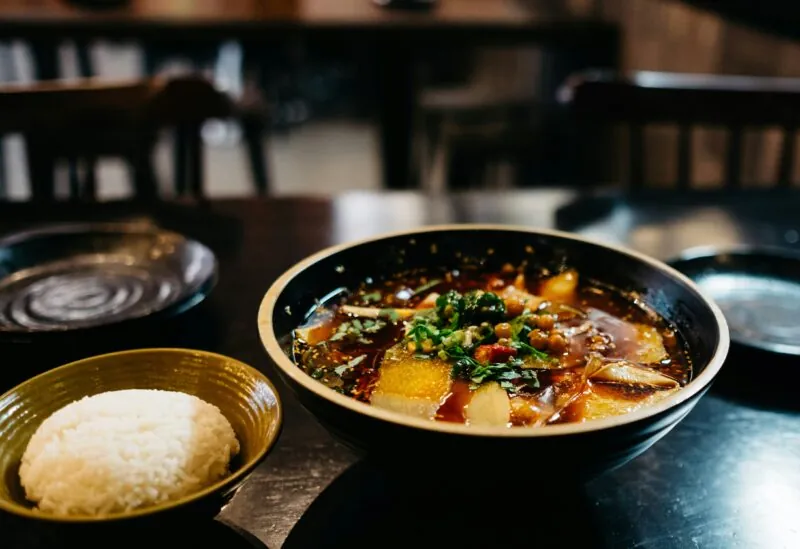On 15 April, the tea beverage brand Hey Tea launched its first freshly made light fruit tea, proclaiming the slogan “Light Burden, Light Fragrance of Tea.” On 25 March, Heytea invited renowned fitness blogger Pamela Reif (帕梅拉) to serve as its health ambassador, recommending a variety of light burden teas. So, what has been driving Hey Tea to consistently promote a healthy and light lifestyle recently?
As early as 2021, the iResearch Consulting Group’s “Big Data Research on China’s New-style Tea Drinks and Consumer Behavior” survey showed that the mainstream consumer groups of tea drinkers had begun consciously choosing healthier beverages, with products featuring a refreshing taste being more popular. Why is Hey Tea only now vigorously promoting the “healthy” label for its products?

Healthy beverages as a trend
For a long time, consumers have been concerned about health issues, but whether there are suitable tea drinks for them to choose from is another question. According to the 2023 report on Nayuki’s tea users, 38% of consumers will voluntarily choose to pay a little extra to upgrade to the option of using “monk fruit sweetener” (sugar substitute sweetener). Healthy products imply higher prices, but many people are still willing to spend money to “buy health”.
In March, Shanghai began piloting “nutritional health guidance”, with brands such as CHAGEE, Nayuki, Happy Lemon, and Hangzhou Leyuan becoming the first to participate in the Shanghai “nutritional selection” logo pilot. According to the news, after the pilot graded the labels, the sales of some high-grade drinks increased.
The driving force for brands to enter the healthy tea drink market is more likely to be the intensification of industry competition
The potential of healthy consumption cannot be underestimated, but the driving force for brands to enter the healthy tea drink market is more likely to be the intensification of industry competition. According to the China Commercial Industry Research Institute, the number of new-style tea drink brands in China has exceeded 163. The competition faced by these new tea drink brands includes not only the “chaotic war” of multiple brands in the same industry, but also challenges from crossover players from other tracks, such as dairy industry leader Yili Group and real estate enterprise Chongqing Dongyuan Industry.
Faced with this harsh reality, tea drink brands have to explore new ways of reaching their customers. After going through various competitions such as business models, store locations, explosive products, and pricing strategies, the tea drink track seems to have reached the peak of competition. Therefore, with the boost of momentum, tea beverage brands are beginning to focus on healthy marketing. Brands are focusing on how to highlight the health attributes of their products to shake off the label of “unhealthy” drinks on the market.
Healthy marketing as a method
The strategies adopted by major brands can be broadly classified into three categories:
Launching dedicated product sections online to help customers with health needs find suitable products. For example, CHAGEE has launched a “Low Burden Sugar Control Zone” online, relieving consumers of the burden of “tea drinking.”
Publicly disclosing product ingredient data makes the calorie content perceptible. For instance, Hey Tea displays the formula and raw material information of its products on its WeChat mini-program. CHAGEE has launched a calorie calculator (including values for calories, protein content, carbohydrates, fats, etc.) and product identity cards. ChaPanda’s fresh milk tea products have disclosed testing reports and calorie information. All of these efforts are aimed at helping consumers quickly filter information.



To emphasise the quality of raw materials and promoting real milk and fresh fruit, Shuyi Tealicious introduced the concept of “plant-based new tea drinks” into its product strategy in early 2022. Hey Tea also subsequently launched 3.8 Source Muzhen Milk, advocating the rejection of artificial tea and instant tea powder.
However, many other brands have stumbled on the health marketing bandwagon. For example, Chi Forest faced setbacks in promoting “zero sugar, zero calorie, zero fat,” as it blurred the difference between “zero sucrose” and “zero sugar” in its promotion, causing consumer misunderstandings and a decline in brand trust. Not playing word games in consumers’ cognitive and visual blind spots should be a consensus when tea beverage brands promote health.
Healthy life as a direction
Smarter brands are trying to establish connections with a healthier lifestyle.
In addition to basic product innovation and honest marketing, smarter brands are trying to establish connections with a healthier lifestyle.
Following the collaboration with the fitness app Keep in October last year, CHAGEE released the “Spring Visits | Tea Seeking | Returning to the Source” TV commercial in March this year. In the video, using yoga, running, and cycling scenes, the single product Boya Jue Xian (伯牙绝弦) is integrated into the sports scenes. Through this video, CHAGEE attempts to demonstrate “exercise paired with healthy beverages,” making tea drinking a part of a balanced routine.

As mentioned earlier, Hey Tea invited fitness blogger Pamela Reif to serve as their health ambassador, leveraging her popularity to establish a healthy image for the brand. Luckin Coffee is also taking active steps, from hosting charity events to signing athletes for endorsements, advancing its brand strategy of promoting a healthy and active lifestyle.
Consumers’ expectations for healthy tea drinks require not only the products themselves to have healthy attributes but for brands to tell healthy stories, allowing consumers to “dare to drink tea” and “love to drink tea”.









